Data based on John Hopkins University live dashboard on nCoV-2019 global cases as of Feb. 4, 2020
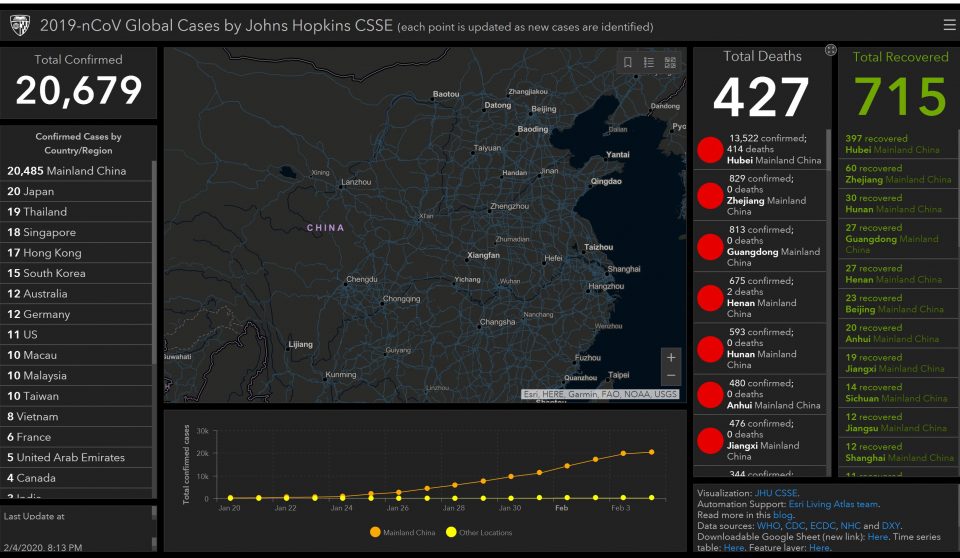
Screenshot of live virus dashboard of the John Hopkins University analyzing and collating data on novel coronavirus cases worldwide. (Screenshot as of Feb. 4 data at 8:15 p.m./Courtesy John Hopkins University)
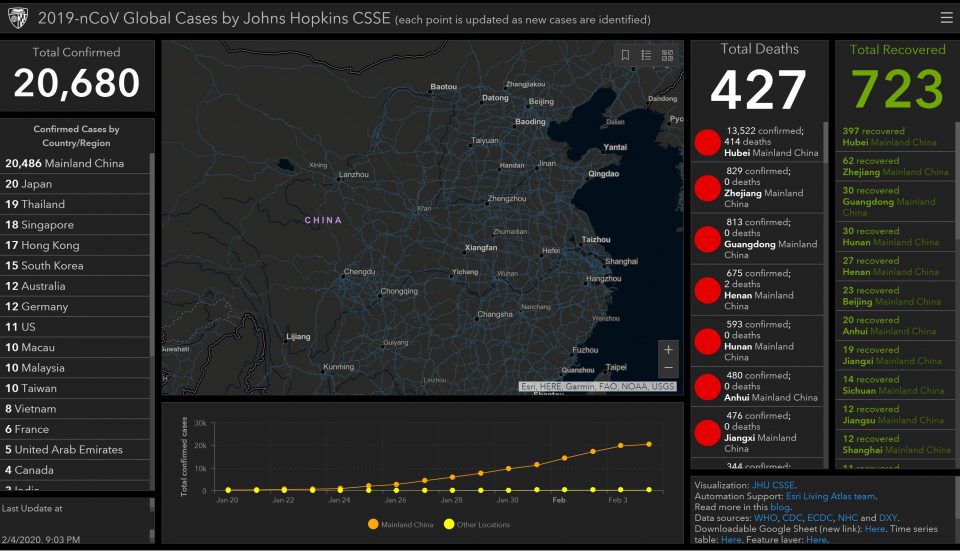
(Eagle News) – There are increasingly more persons who are recovering from the 2019 novel coronavirus or 2019-nCOv than those who died from the virus that has been causing a global health scare.
The latest data (as of 9:03 p.m., Feb. 4, 2020) from the virus dashboard of the John Hopkins University compiling information and various statistics on the nCoV-2019 global cases showed that the number of persons who recovered from the virus at 723, mostly in mainland China, exceeding the total number of fatalities at 427. Total confirmed cases were at 20,680.
Starting Sunday, Feb. 2, the number of those who recovered from nCOv-2019 was increasing and even surpassed the fatalities, with 345 recoveries compared to 305 deaths. The confirmed cases then were 14,599, based on data from the virus dashboard of JHU which compiles statistics from the World Health Organization (WHO), the US Centers for Disease Control and Prevention (CDC), the European Centre for Disease Control and Prevention (ECDC), and the National Health Commission (NHC) of China, among others.
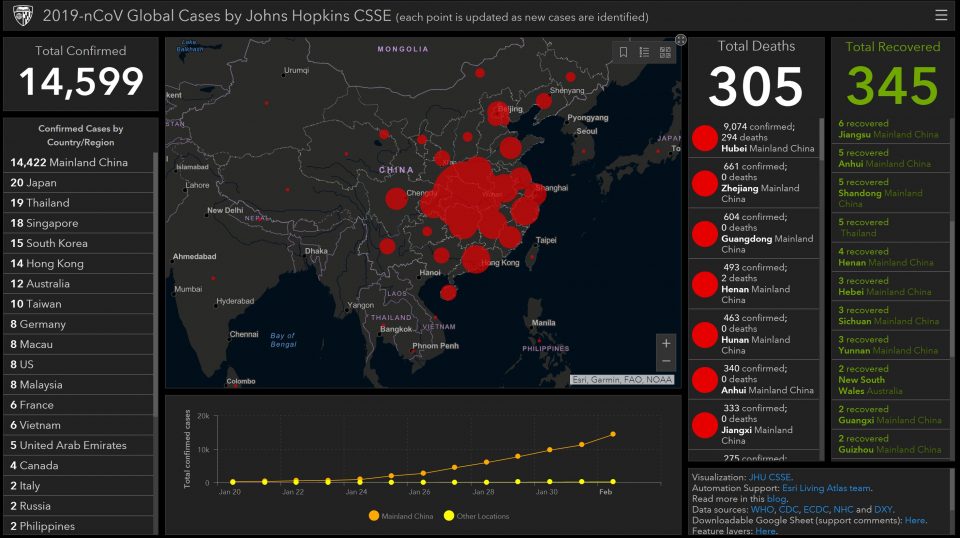
On Monday, Feb. 3, the gap even widened with 506 recoveries while there were 362 reported deaths. Total confirmed cases then were at 17,485 worldwide mostly in China. (See screenshot below.)
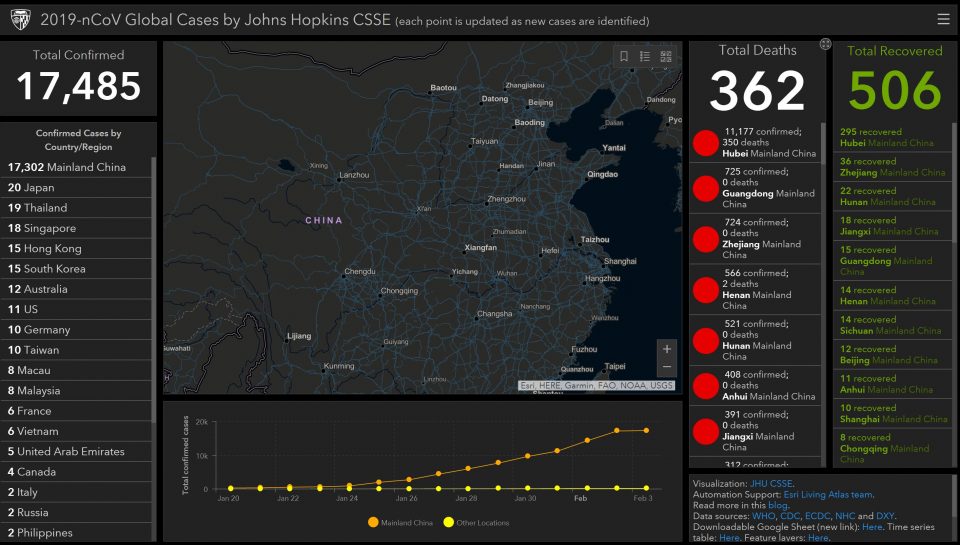
On Tuesday, Feb. 4, the increase in nCoV infected persons who recovered became even more evident at 715 persons as of 8:15 p.m., based on the data from the dashboard on nCoV-2019 global cases which is being updated periodically by the John Hopkins University (JHU).
As of 7:45 p.m., there were 702 persons who were listed as having recovered. This means that within 30 minutes, there were 13 reported recovered persons added to the list.
An hour before this, at 6:43 p.m., the number of those who recovered was listed at 697, mostly in China. This means that within an hour, there were reported five persons who recovered from the virus, or 18 recoveries within two hours as updated by JHU’s live dashboard, while the death toll stayed at 427.

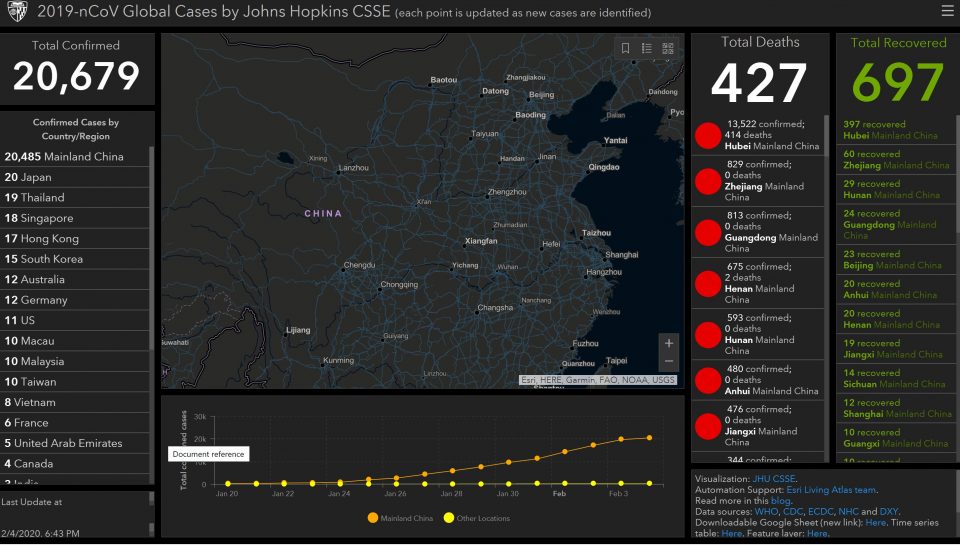
(Refresh the John Hopkins University live dashboard on nCoV cases for updates)
Based on the data reported in the JHU live dashboard of global 2019-nCoV cases, many of those who were listed as having recovered from the virus were in mainland China.
The following is the list of provinces in China and the number of those who recovered from the infection, as of the latest data (8:15 p.m. Feb. 4) from the John Hopkins University dashboard:
397 recovered from Hubei; 60 recovered from Zhejiang; 30 recovered from Hunan; 27 recovered from Guangdong; 27 recovered from Henan; 23 recovered from Beijing; 20 recovered from Anhui; 19 recovered from Jiangxi; 14 recovered from Sichuan; 12 recovered from Jiangsu; 12 recovered from Shanghai; 11 recovered from Shandong; 10 recovered from Guangxi; 9 recovered from Chongqing; 5 recovered from Hainan; 5 recovered from Yunnan; 4 recovered from
Hebei; 4 recovered from Heilongjiang; 3 recovered from Fujian; 3 recovered from Gansu; 2 recovered from Guizhou; 2 recovered from Liaoning; 2 recovered from Shanxi; while one person each recovered from the provinces of Inner Mongolia, Jilin, Ningxia, Shaanxi and Tianjin.
The other countries with confirmed reported recoveries based on the John Hopkins University live dashboard on nCoV-2019 global cases are in Thailand (5 recovered); New South Wales Australia (2 recovered); Japan (1 recovered); and Vietnam (1 recovered).
John Hopkins University, founded in 1876, is America’s first research university.
The site worldometers.info, which compiles live world statistics from various sources, even reported that the number of those who recovered from nCoV at 776 as of 10 p.m., Tuesday, Feb. 4, 2020.
Experts and researchers have earlier said that the mortality rate of the nCoV-2019 was at 2 percent, which is much lower than SARS (Severe Acute Respiratory Syndrome) and MERS-CoV (Middle East Respiratory Syndrome Coronavirus).
This means that out of 100 persons infected, two have reportedly died.
The mortality rate for SARS is at 10 percent, while for MERS-CoV, it is even higher at 34 percent.
(Eagle News Service research)







